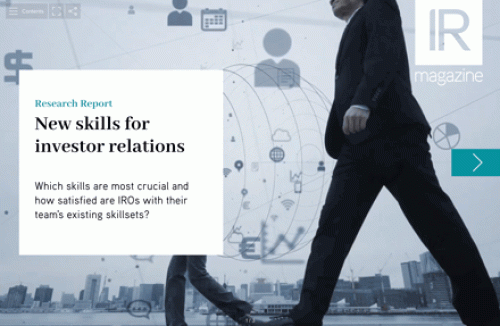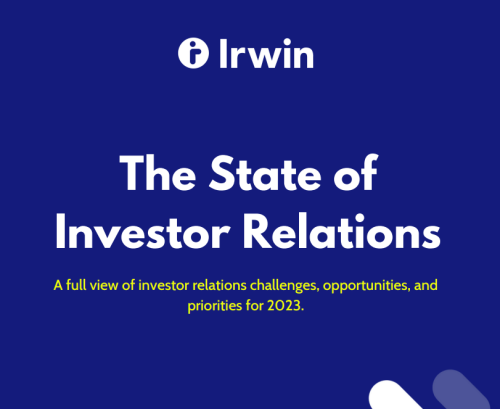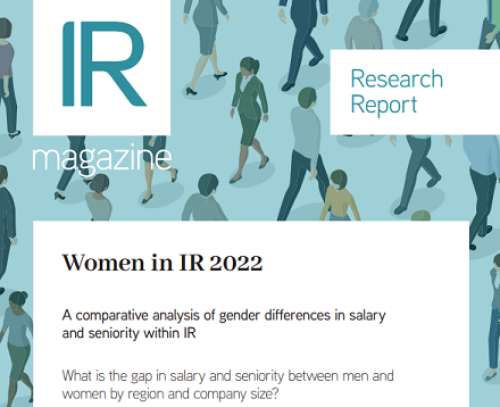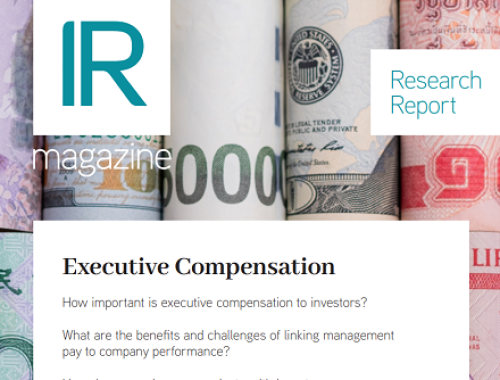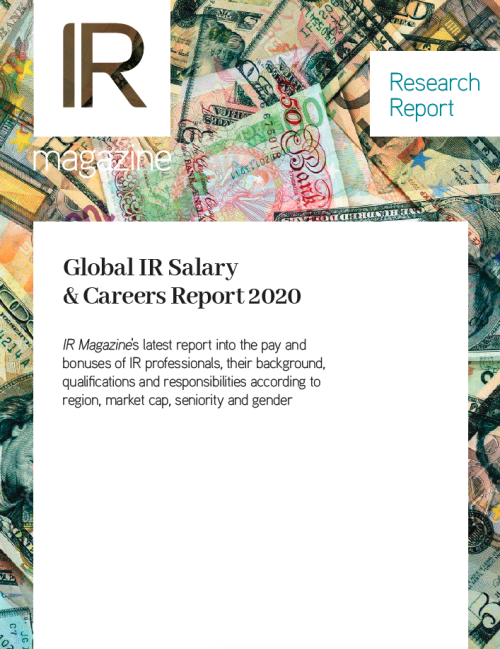Company veterans and external experts at HP, Intel, IBM, Dell, CGI, Cisco and Google
It’s a rough distinction but, broadly speaking, IROs can be divided into two groups. For the purposes of this article, let’s call them the imperial guard and the samurai warriors. HP, Intel and IBM are in the former camp as they have each appointed a company veteran to their IR department. Investors and analysts benefit from the depth and range of these veterans’ experience at the company, while the IROs themselves benefit from exposure to the capital markets.
Other companies have headed in the opposite direction. Dell and CGI, both directed by strong and successful entrepreneurs, selected IROs from outside the information and communication technology (ICT) sector. These individuals had skill sets that did not exist internally but were key to the companies’ positioning objectives. These are our samurai warriors.
IROs from Google and Cisco don’t fit neatly into either category, but they do round out this collection of tech IRO snapshots.
Lynn Tyson, Dell
Lynn Tyson, vice president of IR and global communications at Dell, joined the computer company in 2000 after building a career in the food, beverage and restaurant industries. She had worked in corporate finance and IR at PepsiCo for more than a dozen years. In 1997 PepsiCo spun off its KFC, Taco Bell and Pizza Hut restaurants as Tricon, which later changed its name to Yum! Brands, and Tyson moved over as head of IR.
It wasn’t chance that brought Tyson to Dell. ‘The choice was more a result of strategic thinking than serendipity,’ she explains. ‘Michael Dell wanted to change the company’s image from a number of individual product lines to a unified company directed toward developing a cohesive, long-term stream of cash flow.’
The food and beverage sector had always been seen as a defensive play by investors, and that was now to become part of Dell’s image. Tyson waged her campaign inside and outside of Dell, explaining how the firm’s different units had been strategically marshaled into a cohesive, long-term, reliable profit maker.
One key issue of concern for many IROs in ICT is earnings guidance, and Tyson’s experience is a telling case study. In May 2006 Dell ceased issuing earnings guidance, noting that sell-side analyst questions were based too much on quarterly guidance issues and were distracting everyone from the long-term growth picture. ‘Sell-side people dwell on these guidance numbers in analyst calls,’ Tyson says. ‘They’re rated for a large part on their ability to produce these numbers accurately, and if we do not produce them, they have to.’
Kevin Sellers, Intel
At Intel, vice president of IR Kevin Sellers emphasizes that the major emerging change in ICT investor relations is the need to establish a long-term, company-specific vision in the minds of investors. ‘One reason they brought me into this job is that one of my last assignments was as director of corporate brand strategies, where I worked to establish definite strategic goals in the marketplace,’ he says. ‘We used to be judged by investors on very simple grounds: how many processors we shipped and sold. Not anymore. Now they want to know how we are planning long term for the bigger picture.’
Sellers’ title before he was drafted into Intel’s IR department was director of global brand strategy and market research. Prior to that role, he lived in Tokyo and worked as director of marketing for Intel Japan. All in all, he has been at Intel for 17 years in jobs ranging from finance to operations and marketing.
Sellers’ marketing background quickly shows itself as he reaches for a practical illustration of Intel’s IR shift. ‘Today, in our web-dominated world, computers and microprocessors are at the heart of almost every aspect of business and life,’ he says. ‘Fitting into the net now and in the future is what is important. The San Jose Mercury News recently asked readers what they wanted for Christmas. Third and second place went to personal happiness and world peace. The most wished-for item was a new laptop.
‘The world is changing as it continues to adapt to our products and they become a larger part of people’s way of life. As a result, IR has become more of a strategic thinking process, bridging the analysts’ views and the company’s plans for our future direction.’
Lise Buyer, formerly at Google
As a pioneering internet analyst, Lise Buyer had no IR experience, but she was still a natural choice to lead Google’s pre-IPO IR program. Buyer made a name for herself covering technology stocks, first with T Rowe Price and then at Credit Suisse First Boston (CSFB). She underwent her internet conversion when she moved to the west coast. ‘I had been mostly focused on desktop technology,’ she says. ‘It became apparent to me in 1996 or 1997 that the internet was going to be something big and different, and it was going to change the way we do things.’
Buyer ended up as director of the internet and new media research practice for CSFB. She went on to a Silicon Valley venture capital firm before getting hired by Google in April 2003 to work on its IPO as director of business optimization. After leaving Google in August 2005 she went to Tellme, a private tech company, then started her own firm, Class V Group, which specializes in IPO IR.
Class V, Buyer’s website explains, takes its name from the highest ranking for whitewater rapids, characterized by ‘unavoidable waves and holes or steep, congested chutes with complex demanding routes’, and demanding a guide to get adventurers through them – just like the IPO process, Buyer points out.
Lorne Gorber, CGI
It was Lorne Gorber’s effectiveness with US analysts and investors while he was at Abitibi Consolidated, a forest products company, that caught the eye of CGI, a rapidly growing Montreal technology outsourcing firm. CGI had listed on the NYSE in 1998 but by 2005, having grown from a two-man basement partnership to 25,000 employees and nearly $4 bn in revenue, it was still getting little notice in the US. That year CGI hired Gorber as vice president of investor relations, and in 2006 he was made vice president of global communications and investor relations.
‘I found the natural resources business to be extremely challenging, but I benefited from getting to learn about and familiarize myself with our clients’ industries at CGI,’ Gorber recounts. ‘Growth was something I wanted to talk about, and it is the centerpiece of CGI’s story. Moreover, we are a company of owners. As 80 percent of CGI employees are shareowners, I get very rapid feedback on my performance.’
Speaking at the IR Magazine Canada Think Tank last September, Gorber pointed out that CGI has benefited from being compared with a US peer group. ‘Canadian investors might look at a stock that has already climbed a lot and shy away from it,’ he pointed out, ‘but US investors may be looking at another peer group, and your P/E is just approaching the group average.’ Gorber, who is currently president of CIRI Quebec, has a more artsy background than most IROs. An English lit major from Montreal, he went on to do a master’s degree in film production at the University of Southern California and has worked on script development projects for HBO and Sony Pictures.
Jim Burns, Hewlett-Packard
Jim Burns is vice president of IR at HP and has been at the company for nearly 20 years. Before being appointed to the investor relations team in 2007, he had worked in various HP controller positions and as a vice president in the PC accessories business.
As Burns told IR magazine when he moved to IR, ‘it is part of the model at HP that IR is not a career in itself. The company takes people who have operational backgrounds so they can go a bit deeper with IR.’ Burns’ predecessor in IR, Brian Humphries, rotated back into operations as vice president of finance, ‘to get the story of what investors care about back into the business,’ explains Burns.
‘It’s a two-way street,’ Burns adds. ‘With our product experience, we can bring an intimate and ready knowledge of the company to analysts. But we can also then bring an understanding of how to clearly explain our internal valuation creation process back to company managers.’
Patricia Murphy, IBM
At IBM, the imperial-guard approach to investor relations is well established. Patricia Murphy, vice president of investor relations, has been in financial positions at Big Blue for 24 years. IBM is in a class of its own when it comes to ICT investor relations, but it is in step with others in reemphasizing a commitment to long-term goals rather than mere short-term earnings management.
In fact, Murphy notes that IBM has little to learn from the trend of fostering longer-term expectations and minimizing near-term hiccups. In her view, that has always been part and parcel of IBM’s IR. ‘Unlike many technology companies, we have never included guidance statements in our quarterly reports,’ she underlines.
As for the longer-term IR focus, Murphy says that not only has IBM always delivered a message of long-term value, but it also continues to build on that reputation in new ways. At IBM’s annual investor briefing in May 2007, chairman and CEO Sam Palmisano presented a first for the company: a look at revenues and profits expected three years down the road. IBM calls this its ‘2010 road map for earnings’.
‘This long-term approach was very well appreciated by analysts and will be updated at future investor briefings,’ Murphy says.
Blair Christie, Cisco Systems
Cisco’s stock was hit particularly hard by the millennium ICT meltdown, but it has recovered in style. Part of that success can be chalked up to the energy and hard work of Blair Christie, who, as head of IR, helped earn Cisco the grand prix for best overall IR at the IR Magazine US Awards 2004, among other honors over the years. In 2006 she took over as Cisco’s senior vice president of corporate communications, and consolidated communications functions across the company.
Christie has long pushed Cisco’s IR toward a more accessible, larger-issues approach. Over the past two years there has been a more determined effort to ingrain that approach in the corporate culture. She’s clear about her determination to keep Cisco open to analysts and investors. ‘It has always been a policy at Cisco to reach out to investors, but over the past few years we have really emphasized those efforts,’ she points out. ‘We want analysts and investors to meet our top decision makers and to be in touch with our product mangers and others who know specific areas of the business on a day-to-day basis.’
Cisco has continued to do well at the IR Magazine US Awards, this year winning the accolade for best use of conferencing. ‘The company does an amazing job in IR and its strength is in the presentation,’ said one respondent to the awards survey.
As she picked up her trophy, IR chief Laura Graves plugged a Cisco product that’s right up an IRO’s alley: TelePresence, a high-end video conferencing system. Cisco was also nominated for the grand prix for best overall IR, best corporate governance and best corporate advertising.

